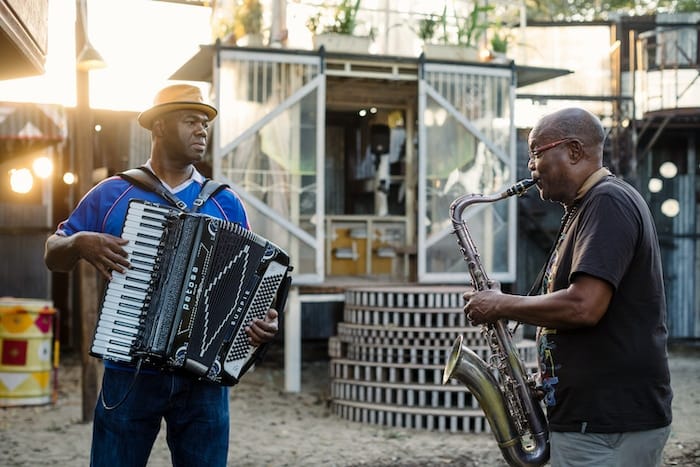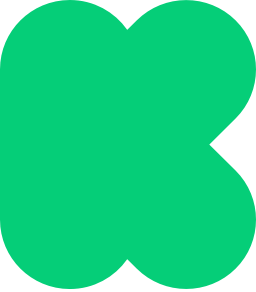How To Build Your Kickstarter Art Community
Avoiding the bystander effect, making the most of the bandwagon effect, and all-around good advice on getting support for your project.

You’ve made it to the first finish line: Your campaign text and images look stellar on a draft page, your video and rewards are uploaded, and you’re confident in your goal size. Congratulations! Your hard work and dedication is about to pay off when you launch your campaign and crowdfund your next big artistic project.
That said, maybe this is your first time crowdfunding and you’re getting nervous about whether or not your community will show up and back your campaign. Maybe you’ve crowdfunded years ago and need to freshen your community building toolbox. Either way, as the former Arts Outreach Lead at Kickstarter, I know how essential an outreach strategy is to ensuring you reach your goal (and then some!).
Below, I’ll go over the main tools you should know about, build out, and rely on before you hit that launch button—and when you’re live.
Start with the Statistics
In the Art and Photography categories, the average pledge is around $70 for projects with goals larger than a few hundred dollars. Most backers will pledge $25, some will pledge around $100, and there’s often at least one backer that pledges at a three- or four-digit number. The higher your goal size, the more likely you’ll need backers at a $100 and backers at a three- or four-digit number.
There’s also a general rule-of-thumb that around 10 – 30 percent of backers will come from Kickstarter’s own community of superbackers, patrons, and everyday people that love to see projects come to life. That means the rest of your backers (70 – 90 percent) will come from your community, whether that’s friends, family, past collaborators, backers from an article, teachers, fans, friends of friends, neighbors—you name it.
Using these statistics, we can usually figure out how many people you need to get to your goal. Let’s say your goal is $7,500 to fund a small mural in your community. You’ll likely need around 108 backers (assuming they’ll pledge an average of $70), and you’ll likely need to pull in 75 – 97 of these backers (assuming the rest come in from Kickstarter).
Not bad, right? This helps put your outreach into a more manageable perspective. You don’t need thousands of fans, or even hundreds of collectors lined up to make your dream project a reality. It oftentimes just takes strategy to focus on a hundred or so people in your community.
Personal Emails: The Old-School Game Changer
Time and time again, I see the most effective method at converting an interested viewer to a campaign backer are emails. That’s right: personal email. I see this tried-and-true method work because it avoids the bystander effect. How many times have we seen someone’s social media post asking for support, and thought, “Someone else will help them out”? We think someone else will do the job, when it’s oftentimes up to all of us to pitch in.
That’s why a consistent, direct, individual email appeal to someone in your network is effective at eliciting a response, because it’s directly asking your community, one-by-one, to support your work.
Start with looking at my template of personal emails here, which contain:
- The recipient’s name
- A customizable sentence greeting
- One to two paragraphs inviting them to support your next big project on Kickstarter
- A reward you think they’ll like, or if they can’t give financially, ask to share it on a social media channel they use the most
- A thank you and your name
The guide above also has emails from artists that you can use for your own, along with guidance on how to write your own template to use over and over to make the process smoother. I then encourage creators to set goals for each week of the campaign, like sending 20 or 30 personal email appeals per week. It’s also perfectly acceptable to bring in a friend or assistant to do this work, and offer them a campaign reward, meal, or money in return.
But who should you email? That’s easy:
- Go to your email’s Sent folder, and review the past 200 people you’ve emailed.
- Consider reaching out to the past 100 people you’ve texted. This will likely cover your friends and family. Plus, sometimes these people just need a text from you encouraging them to support your campaign, as opposed to an email.
- Think through past collaborators, colleagues, artist friends, curators, teachers, and collectors. Build a list of their emails and send away.
- Think through your neighbors. Remember to mention it when you bump into them, and ask for their email to send them more info.
- Your contacts on your phone or email. This will likely cover the “Oh! I forgot about them!” folks, who will likely love hearing from you and get excited to support your work.
The cadence for following up is a simple rule of thumb. Follow up over email at most two times: once after two weeks of no response, then a third when your campaign has two days left. I guarantee most people who you individually emailed but didn’t back your project are simply busy. A simple one or two sentence follow up email to bump your original email back up to their inbox is a friendly reminder to them to support your work.
Use a Newsletter to Offer a Focused, Friendly Reminder
The second most effective tool is the newsletter, written and sent out on a platform like Mailchimp or Constant Contact. If you’ve already built yourself a newsletter, now’s the time to dust it off and put it to good use; if not, this is the perfect time to set one up and use it during, and after, your campaign.
This guide walks you through how to write one for a Kickstarter campaign, especially the first one you’ll send, the follow-up newsletter you’ll likely send mid-campaign, and the third you’ll send when time is almost up. Think of this as your own personal press release: It’s an excuse to celebrate your hard work and your next big project.
Keep them colorful, use images from your campaign, and don’t forget to link to your campaign. You can even use Kickstarter’s reference tag feature to track where people are coming in to back your project; a newsletter send is a perfect candidate for this feature.
Project Updates Are Like Social Media Posts You Can Email
An often neglected and underrated tool at your disposal is the Kickstarter Project Update. By writing an update and posting it to your campaign, your backers get it automatically as an email, and prospective backers can see your progress live. It’s a win-win because backers can share it with folks in their circles to encourage them to share and prospective backers on your page can hear directly from you what’s going well in your campaign as a sign of confidence.
As usual, I already have a guide for you to craft the best update, but they often include the following:
- A thank-you and celebration of success (did you hit your goal? Are you halfway there?)
- A roundup of news, or posts from friends, you want to shout out
- Any rewards that are selling fast (e.g. “Get them while they’re hot!”)
- Encourage backers to share the post so you can double the number of backers.
This is also a perfect place to announce new benchmarks or initiatives as your campaign is up. Maybe you’ve reached your goal and want to announce a stretch goal. Maybe a generous donor wants to match a weeks’ worth of pledges. Maybe you’re introducing a new reward, or adding more to a reward that sold out. Any of these moments are a perfect excuse to send an Update. Your goal here is to get a bandwagon effect in motion: The more a potential backer sees how much momentum a campaign has, and how quickly rewards are selling out, the more likely they’ll back.

Social Media: Possibly Helpful, Never Guaranteed
I know I’m an outlier here. I can’t count the number of times I’ve heard other crowdfunding experts espouse the essentiality of a ten-page social media strategy. I’ve just never seen a single strategy work for everyone. Maybe that’s because algorithms on Facebook, Instagram, Twitter, and other platforms are increasingly difficult to work around without having to pay for a boosted post; maybe that’s also because our society right now is a little tired of social media, and some of our eyes glaze over when we see a post asking for support.
This is why I de-emphasize social media as a tool to use when building your community. Publishing posts that highlight your campaign and ask for support are a great way to spread the news, but their ability to actually generate dollars is hard to guarantee these days.
With this in mind, here are my general rules of thumb when leveraging social media:
- Use images from your campaign, especially your header image, as it’ll likely be familiar to your followers if they’ve seen your newsletters or campaign page.
- Keep them short and sweet—some guidance and past examples that have worked well are all here.
- Focus posts during the campaign on specific rewards that are selling well. If you want to try and pay to boost a post, try these ones first to see if they help at all. If it doesn’t, don’t bother trying again—you’re likely wasting money.
- Facebook tends to work the best at generating backers, then Twitter, then Instagram. That said, if your community is really engaged on one of these channels (or others, like reddit, Discord, or TikTok), focus there first and see if it’s working.
- Make sure you’re looking at your campaign dashboard to see if people are really coming in on your platforms to pledge. It will help you focus on the platforms that are working and drop the platforms that aren’t working.
- Most importantly: Don’t overthink a social strategy for a channel that isn’t working. Your campaign clock is ticking; I’d rather have you spend time sending 10 reminder emails than draft another Instagram post that we likely know won’t bring in a dollar.
Tepid Topics: PR Firms and Writers
I leave these two topics—hiring a PR firm to pitch your project to press, and pitching writers to cover your campaign—for the end because it’s work that never guarantees a pledge. That’s because, in my experience, writers and firms are often more excited to discuss your work when it’s done as opposed to when you’re funding it. Plus, press can often generate public awareness and excitement for the campaign, but that excitement sometimes doesn’t translate to actual backers, especially for art projects that are funding a “public good,” like a mural or exhibition.
That doesn’t mean it’s not worthwhile. If you already have folks in your community who are writing, or who could pitch your campaign to a few newsrooms pro bono, reach out to them and ask—it never hurts. Or, if one of your goals for your Kickstarter campaign is to generate interest, and not just funds, it might be worth scrolling through Twitter for writers, and pitching them through the emails they provide in their bios. This guide by Katheryn Thayer on the Creative Independent is a great place to start if you’re ahead of schedule and want to try your hand at press.
I’m also very skeptical of individuals who message you the day you launch offering their outreach services for money. Again, like a paid social media post, there’s never a guarantee, and I’d rather have you save your money to pay an assistant or friend to help write your newsletters or personal emails. Those tactics work—these tactics may not.
All Together, Now: Follow a Schedule
Take a deep breath now. You got this. We’ve reviewed the most important channels to get your community excited, and now it’s time to set a schedule.
I’ve built an example schedule for the example campaign we had above—a $7,500 campaign for a community-painted mural—right here for you to read, copy, paste, and adjust for your own project. Keep in mind that everyone’s schedule should look a little different, based on where you know your community will respond the strongest.
The last tip I’ll share here is to take on as much as you can, but don’t shy away from asking for help. Running a campaign is a lot of work, and you’ve likely got friends and family surrounding you who could help in a pinch, whether that’s reviewing a social media post, editing a newsletter, or suggesting people to reach out to. Artists always underestimate the power of their community, and the power of the people who want to see them succeed. This is the chance for them to show you just that.
Expert Tips for Launching Your Arts Project on Kickstarter
Planning Your Photobook or Art Book
